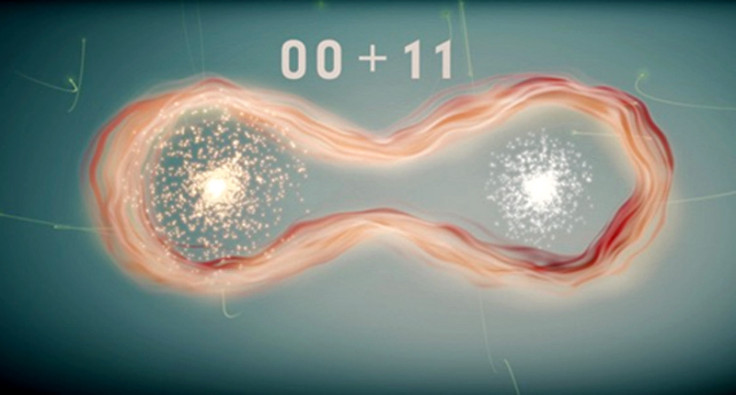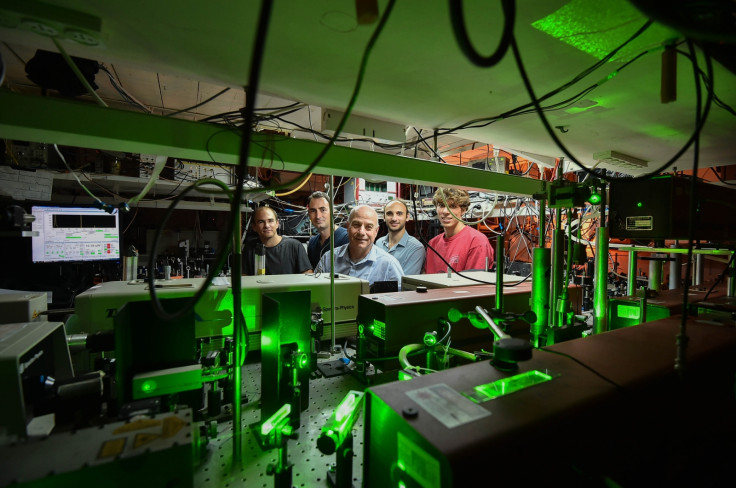Quantum computing breakthrough: Israeli scientists invent cannon for entangled photon clusters
Scientists have developed a device that can guarantee producing an endless sequence of entangled photons.

Scientists in Israel have made a major breakthrough in quantum computing research, creating a device that is able to produce large clusters of entangled photons (light particles) on demand and guarantee being able to repeatedly produce the same result indefinitely.
Researchers from the Technion-Israel Institute of Technology have taken a conceptual idea for creating a kind of cannon or machine gun to ensure on-demand production of entangled photons, which was first suggested in 2009 by Professor Terry Rudolph of Imperial College London and Professor Netanel Lindner of Technion, and proven that it can indeed be done.
Computer scientists, engineers and physicists around the world are currently carrying out research into a mysterious phenomenon called quantum entanglement that even Einstein couldn't understand, because entangled photons can be applied to a wide range of applications, such as developing super-fast quantum computers that can solve extremely large numbers quickly, or lightning fast, super secure communications for a quantum internet.
Quantum entanglement, and why it matters for computing

Quantum entanglement is the process where seemingly counter-intuitive matter instantly affects each other, for example, the measurement of one particle on Earth instantly affecting another particle at the opposite end of the universe.
While computers today are coded using a small unit of data with a single binary value of 0 or 1 called a "bit", a quantum computer would require qubits, which are in superposition so that they can have the value of 1 or 0 at the same time. Entangled pairs of light photons are perfect for this purpose, as each pair has properties that are linked regardless of how far each photon is separated.
The problem, however, is that at the moment it is difficult to produce pairs of entangled photons, and even more difficult to produce clusters of pairs of entangled photons, which is what you would need in order to fulfil a well-known mathematical concept for a quantum computer system, because a cluster state means that all the qubits are entangled in a robust way, so that there is no way for them to be separated.
If you were to shine a laser on a non-linear crystal, you would have a chance of producing two photons that are entangled only sometimes. Even if you could store the photons and replicate the procedure, you would still have only a low probability of creating a cluster of multiple entangled photons, because you never know what you're going to get.
Technion's scientists were the first in the world to demonstrate that it was at all possible to produce pairs of entangled photons back in 2006. In 2014, researchers from the University of Stuttgart demonstrated that it is also possible to get entangled pairs on demand. All the research was done using a "quantum dot", a tiny block that is several tens of nanometres in size. It comprises of one semiconductor embedded in another type of semiconductor.
Building on that work, Technion's scientists have now shown that it is possible to create a whole cluster of entangled photons on demand using the quantum dot, while guaranteeing that each cluster will always contain a predicted number of entangled photon pairs.
"We have demonstrated a new way of producing deterministically a cluster state of entangled photons. We know for sure that we will get one photon at a time, and not only that, we know for sure that it will be entangled with the next photon, and the next one after that, and so on and so forth," Professor David Gershoni at Technion's Faculty of Physics, who led the research, told IBTimes UK.
"If you lose one photon or measure one photon, the rest of the other photons are still entangled. This has never been demonstrated before, being able to achieve an infinite amount of entangled photons."
This method could speed up the development of quantum computers

The typical way of building a quantum computer at the moment is to create a system that has a large number of qubits – let's say 20 – and then build logic gates where the qubits can communicate with each other and carry out controlled swaps of bits in order to factor impossibly large numbers.
The problem however is that the values 0 and 1 must have a definite phase between them, and this doesn't last forever, so scientists have to activate gate operations between the qubits fast enough before the qubits lose their coherence.
Currently researchers around the world are building quantum computer systems using ions and atoms, or like IBM, they're using superconducting circuits that act as qubits. But Gershoni says that the Technion researchers' solution using particles of light is a much better way.
"To measure the state of an electron in matter is not easy because it decoheres very quickly. Measurement is difficult in matter. The good thing about photons is that in air, they do not decohere and their state can be easily measured using a polariser," explained Gershoni.
"Light is an electromagnetic field. The polariser tells you the direction of the electromagnetic field. Light can be polarised vertically and horizontally, so in a qubit, the vertical superposition is 1, while the horizontal is 0. It's very easy to measure light. If you know how to generate a cluster state, then you can do quantum computing by measuring the state of individual cubits in the cluster state."
The study, entitled "Deterministic generation of a cluster state of entangled photons", is published in the journal Science.
© Copyright IBTimes 2024. All rights reserved.























